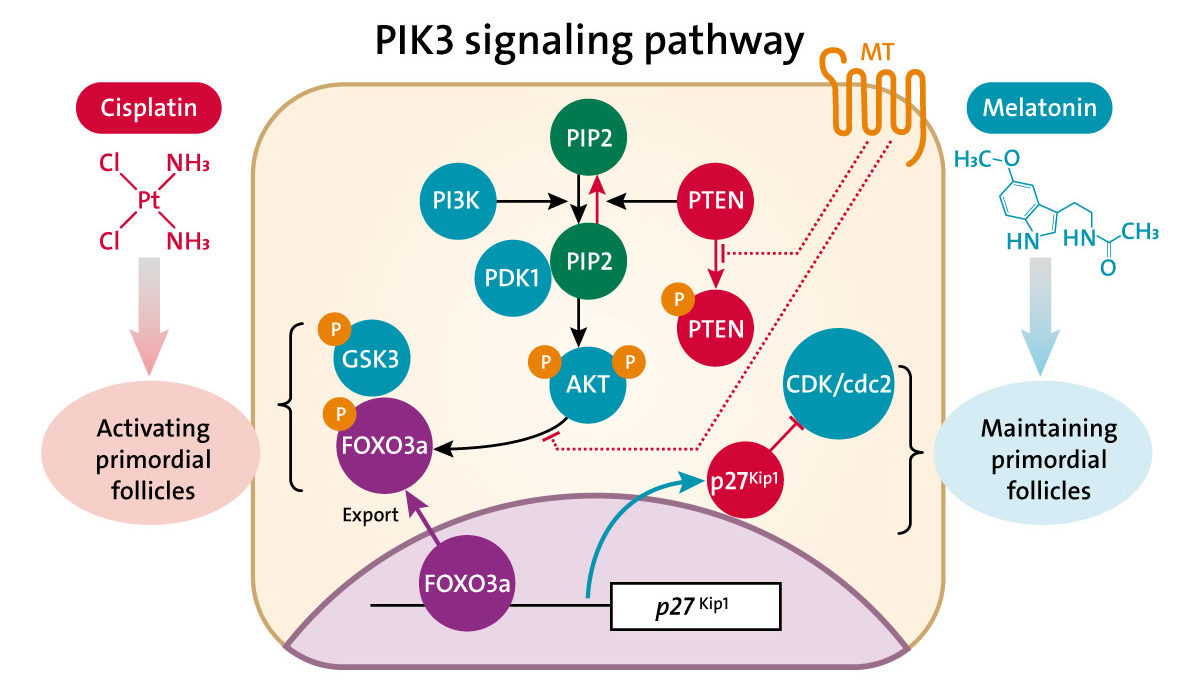Premature ovarian failure is one of the side effects of chemotherapy in pre-menopausal cancer patients. Preservation of fertility has become increasingly important in improving the quality of life of completely recovered cancer patients.
Among the possible strategies for preserving fertility such as ovarian tissue cryopreservation, co-treatment with a pharmacological adjuvant is highly effective and poses less of a burden on the human body. Melatonin is generally produced in various tissues and acts as a universally acting antioxidant in cells. Melatonin is now more widely used in various biological processes including treating insomnia and an adjuvant during chemotherapy.
In this review, we summarize the information indicating that melatonin may be useful for reducing and preventing premature ovarian failure in chemotherapy-treated female patients. We also mention that many adjuvants other than melatonin are developed and used to inhibit chemotherapy-induced infertility. This information will give us novel insights on the clinical use of melatonin and other agents as fertoprotective adjuvants for female cancer patients.
